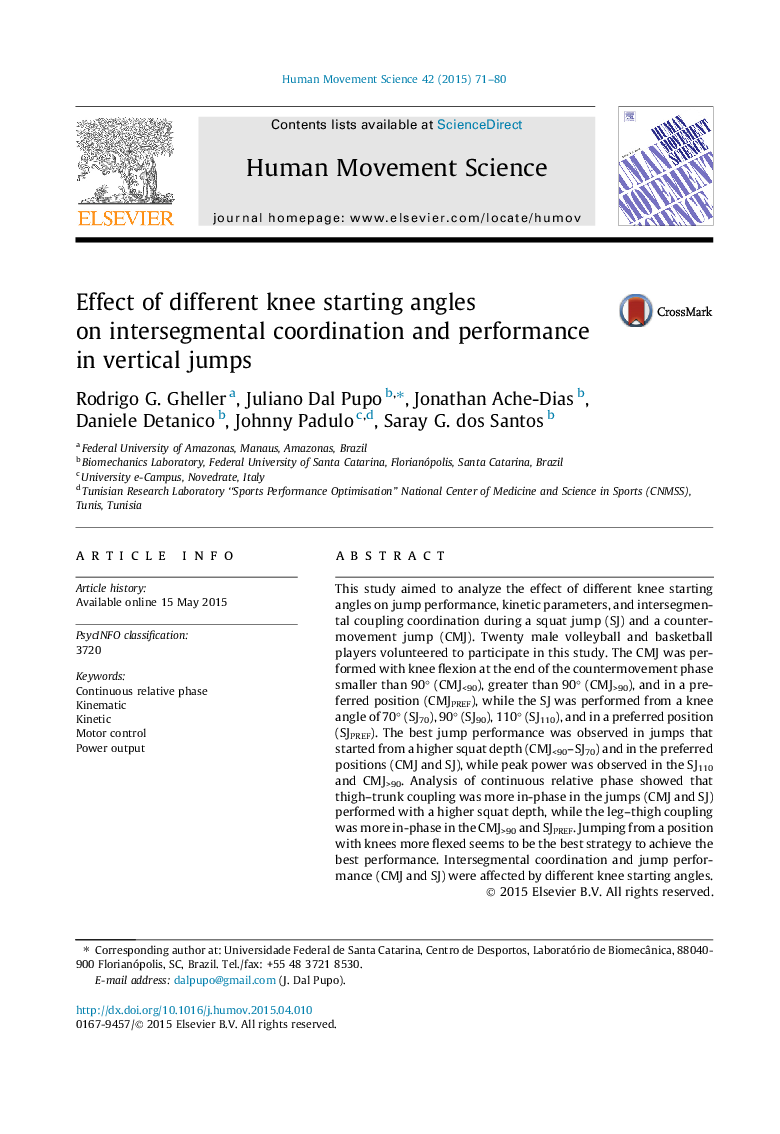| Article ID | Journal | Published Year | Pages | File Type |
|---|---|---|---|---|
| 928231 | Human Movement Science | 2015 | 10 Pages |
•Jump height and kinetic parameters were affected by the different knee starting angles.•The jump performance was better when it was performed from a deeper squat position.•Different squat positions in vertical jumps seems interfere in the intersegmental coordination.
This study aimed to analyze the effect of different knee starting angles on jump performance, kinetic parameters, and intersegmental coupling coordination during a squat jump (SJ) and a countermovement jump (CMJ). Twenty male volleyball and basketball players volunteered to participate in this study. The CMJ was performed with knee flexion at the end of the countermovement phase smaller than 90° (CMJ<90), greater than 90° (CMJ>90), and in a preferred position (CMJPREF), while the SJ was performed from a knee angle of 70° (SJ70), 90° (SJ90), 110° (SJ110), and in a preferred position (SJPREF). The best jump performance was observed in jumps that started from a higher squat depth (CMJ<90–SJ70) and in the preferred positions (CMJ and SJ), while peak power was observed in the SJ110 and CMJ>90. Analysis of continuous relative phase showed that thigh–trunk coupling was more in-phase in the jumps (CMJ and SJ) performed with a higher squat depth, while the leg–thigh coupling was more in-phase in the CMJ>90 and SJPREF. Jumping from a position with knees more flexed seems to be the best strategy to achieve the best performance. Intersegmental coordination and jump performance (CMJ and SJ) were affected by different knee starting angles.
